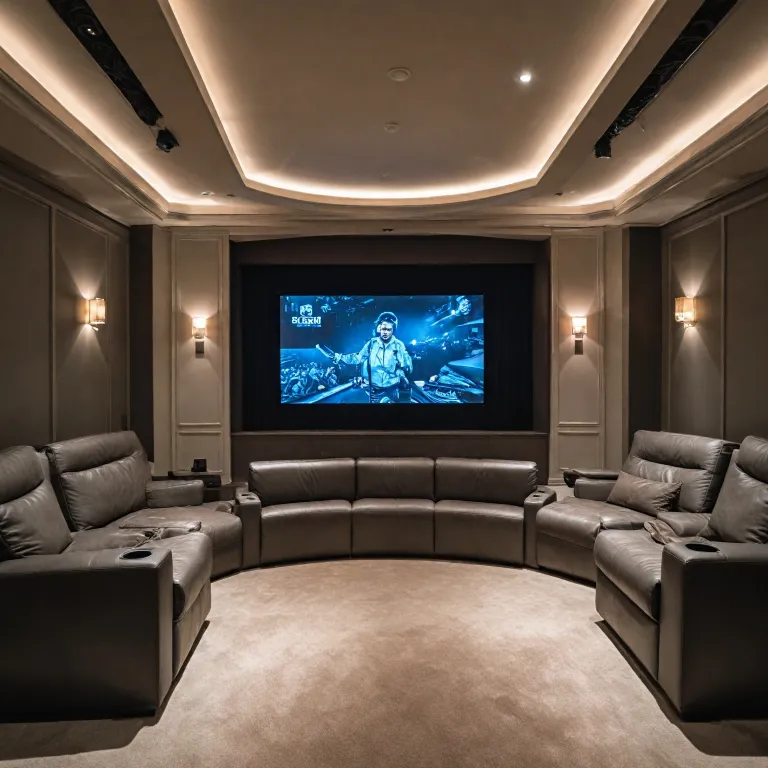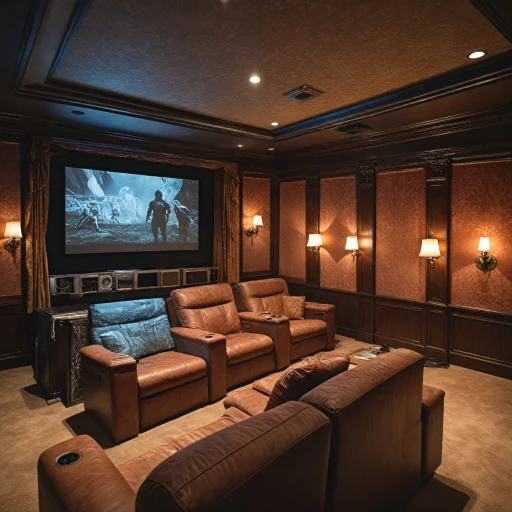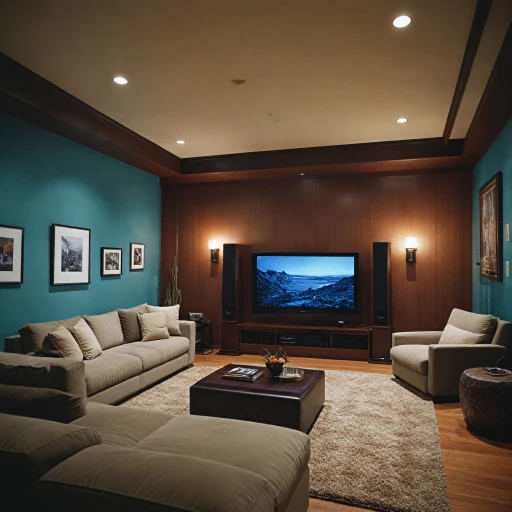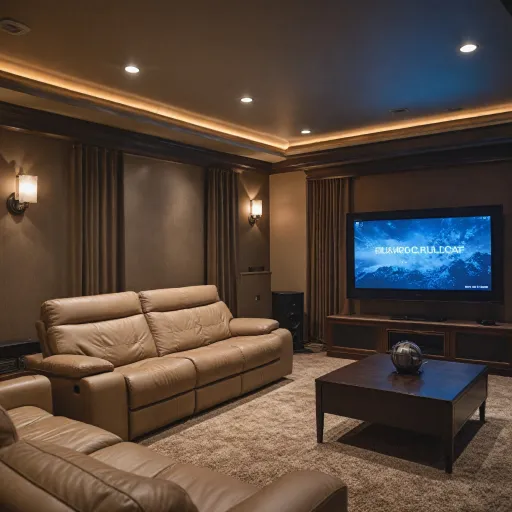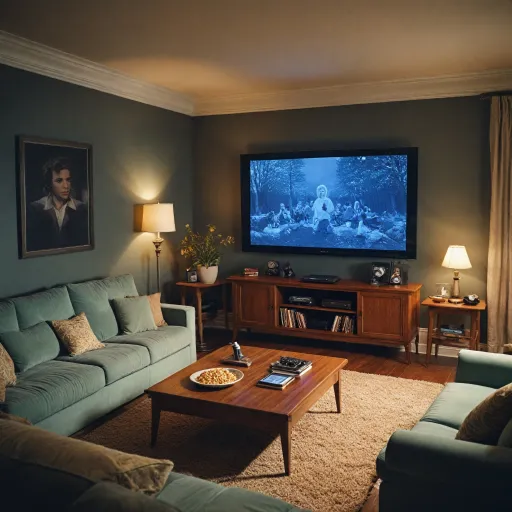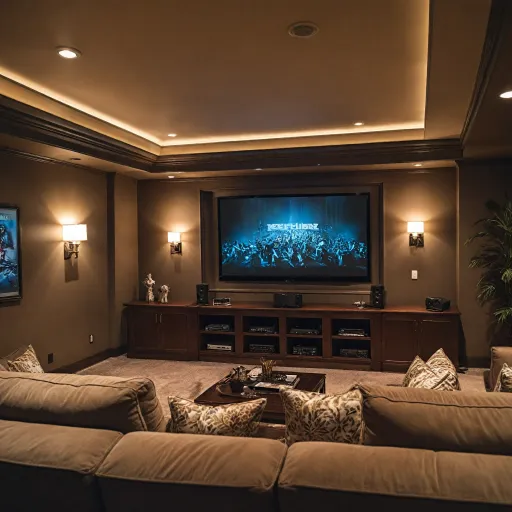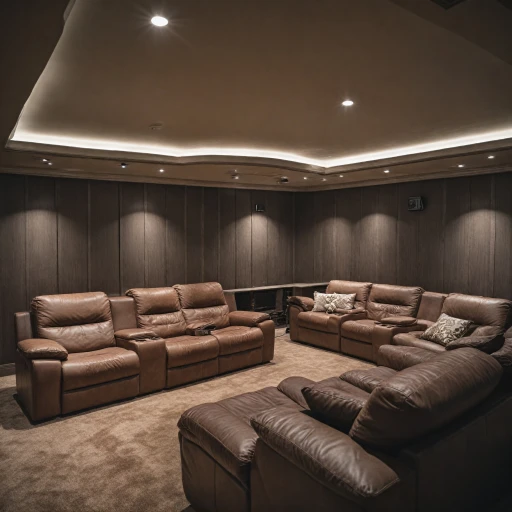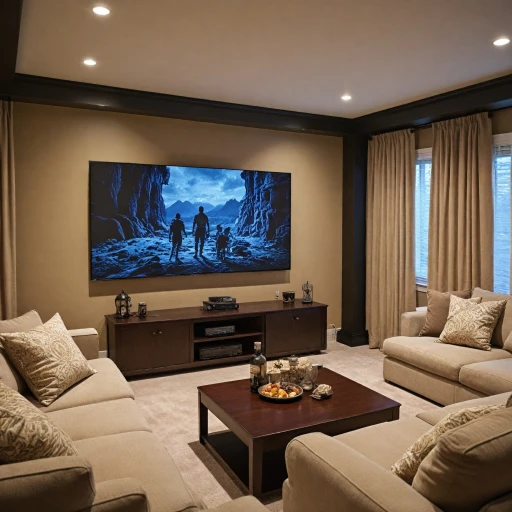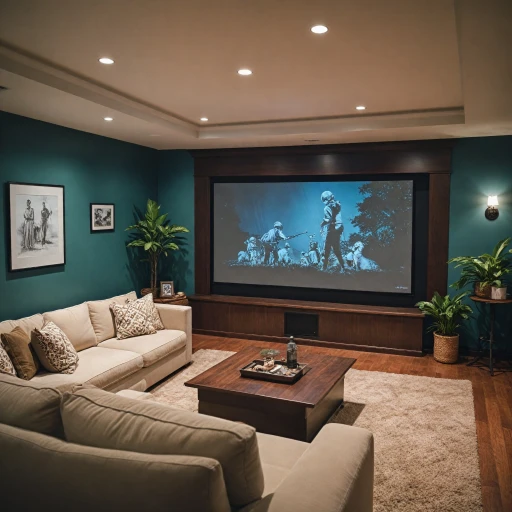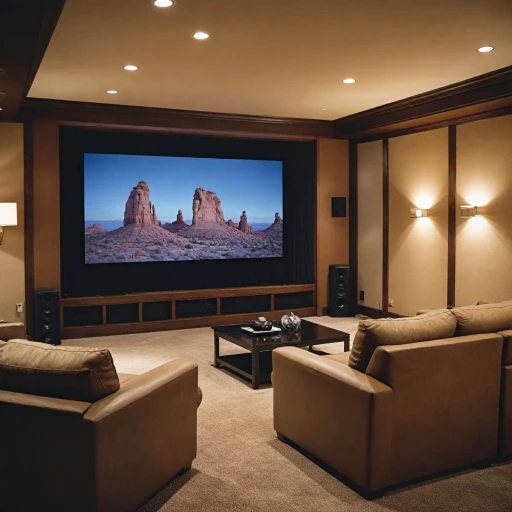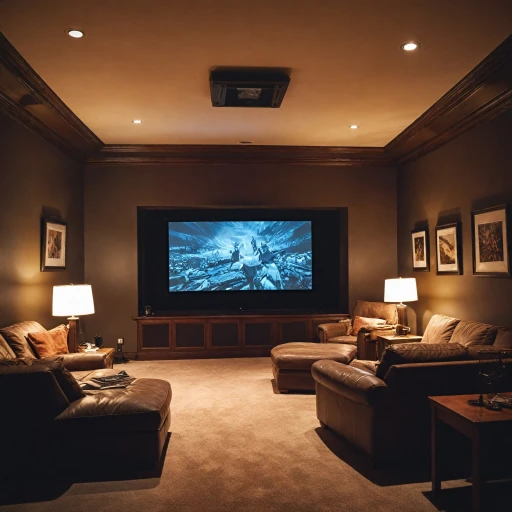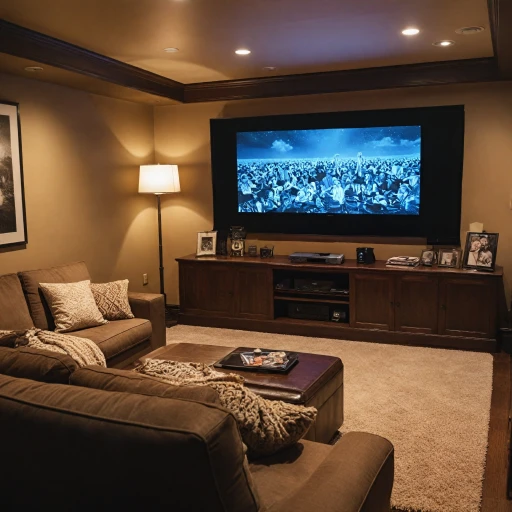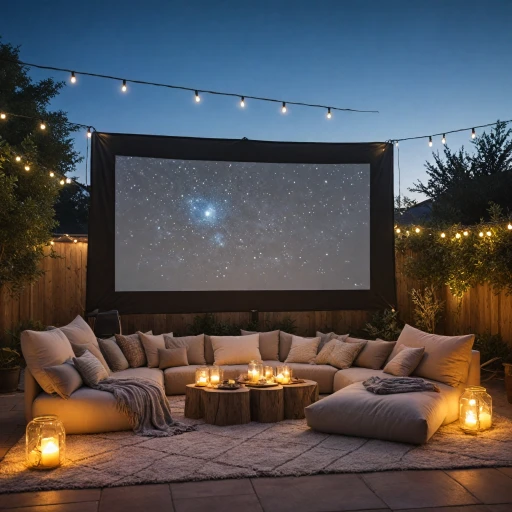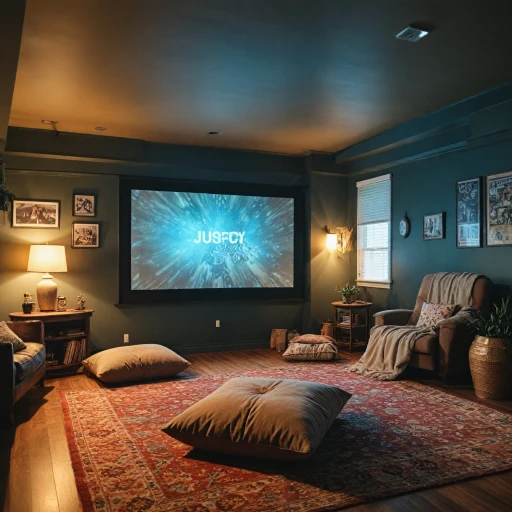
Understanding Multi-Channel Audio
Decoding Audio Channels
In the exciting realm of home theater systems, understanding how audio channels work is crucial for those seeking to elevate their audio experience. Channels are essentially the pathways through which audio signals travel from the receiver to your speakers. A multi-channel setup can greatly enhance sound quality, allowing you to dive into the immersive world of surround sound. To achieve a breathtaking surround sound experience, you'll often encounter terms like 5.1, 7.1, or even Dolby Atmos. These numbers represent the speaker configurations within your theater system:- 5.1 Channel: Standard surround sound format, with five full-bandwidth channels and one low-frequency effects channel.
- 7.1 Channel: Adds two additional speakers, offering a more enveloping audio experience covering more of the room.
- Dolby Atmos: Takes it a notch higher, incorporating overhead speakers or dedicated Atmos-enabled speakers for multi-dimensional sound.
Choosing the Right Projector for Your Space
Understanding Your Space and Projection Needs
Choosing the right projector for your home theater goes beyond just picking a model with a good price tag. It involves considering multiple factors, especially the unique characteristics of your room. This process ensures that your multi-channel audio and visual experience is seamless and immersive.
Size and Throw Distance
The projector’s throw distance is the range between the projector and the screen where it maintains optimal image quality. Assess your room dimensions to determine the most suitable projector model. Look for a model that accommodates the size of your room while delivering sharp and vivid visuals. Features like zoom and lens shift can offer flexibility in placement and image adjustments.
Type of Projector
There are several types of projectors available—ranging from LCD to DLP and LCoS. Each technology has its own pros and cons in terms of color accuracy, brightness, and contrast. Consider testing different models in your space if possible, to see which fits best with your room’s ambient lighting conditions.
Resolution and Brightness
Resolution plays a crucial role in your viewing experience. For Dolby Atmos systems, which enhance the audio channel, pairing them with a 4K resolution projector can bring more depth to your visuals. Brightness, measured in lumens, is equally important; a higher lumen count ensures your projector performs well even in well-lit rooms.
Connectivity and Integration
Ensuring your projector can integrate smoothly with your existing audio-visual system is essential. Look for projectors with multiple HDMI ports, which allow better connectivity with receivers and streaming devices. Some projectors also offer wireless options, which can benefit multi-room setups and prevent tangled cables.
For a more in-depth guide on selecting the perfect projector that pairs well with a Dolby Atmos setup, consider exploring additional resources. The integration between your sound and visuals will ultimately define the immersive nature of your home theater experience.
Optimizing Sound Quality in Your Home Theatre
Achieving Pristine Audio Quality
Enhancing sound quality in your home theater demands a strategic approach to selecting and positioning your speakers. Your multi-channel setup should harmonize with both the spatial dimensions and unique acoustics of your room, ensuring an immersive audio experience.
Key Elements of a Superior Audio System
To elevate your audio, begin by evaluating the different speakers in your setup. Whether part of a simple stereo channel arrangement or a complex Dolby Atmos system with overhead speakers, the choice of speakers influences sound depth and clarity.
- Speaker Placement: For optimal surround sound, place your speakers around the room to target different audio channels, enhancing sound immersion.
- Receiver Strength: The receiver acts as the heart of your theater system—the right model accurately channels multichannel audio, ensuring every whisper or explosion is heard with precise clarity.
- Power Amplifier Use: A power amplifier boosts the audio signal sent to your speakers, ensuring a robust and dynamic sound output, particularly important in large rooms or when using complex multi-room systems.
Enhancing Frequency Response and Sound Calibration
Critical to sound quality is the management of frequency response. Fine-tuning the audio system ensures that all sound frequencies—low, mid, and high—are well-represented and balanced.
- Sound Calibration: Utilize built-in calibration systems or external audio meters to customize the sound for your specific room audio dynamics, reducing echoes and enhancing crispness.
- Acoustic Treatment: Consider adding acoustic treatments, like wall absorbers or ceiling diffusers, to refine sound quality, reducing distortions caused by the room’s acoustics.
Synchronizing Audio and Visual for Coherent Output
A harmonious integration of your audio and visual components is fundamental. Your projector setup tightly synchronized with a reliable audio system ensures a seamless audio video experience, enhancing not just the visuals but the soundscape accompanying it. Attention to setup accuracy fosters a theater-like experience, making every movie night memorable.
Integrating a Projector with Multi-Channel Audio
Seamless Integration: Projector and Multi-Channel Sound
Bringing together a projector and a multi-channel audio setup can elevate your home theater system to new heights, creating an immersive surround sound experience. A harmonious integration requires compatibility among all elements, including the receiver, speakers, and the amplifier, to achieve optimal sound quality across the theater room.
The core of your audio video setup will revolve around a receiver capable of handling various audio formats such as Dolby Atmos and DTS:X. These formats utilize overhead speakers and other channels to deliver a soundscape that seems to come from every direction, enhancing the frequency response and clarity of sound.
When choosing an amplifier, ensure it complements your speaker system, providing adequate power without causing distortion. The power amplifier not only boosts the audio signal but ensures a clear and dynamic range across all multichannel audio configurations. Aim for an amplifier that aligns with your home theater's channel setup, whether it's a 5.1 surround sound system or a more complex 9.1.2 setup with ceiling wall speakers.
Integrating streaming technologies can further augment your audio experience. Devices that support various streaming platforms can enrich content accessibility, thus maximizing your theater system usage. Additionally, consider reading up on advanced receiver settings to refine the overall sound output tailored for multi room audio distribution.
Last but not least, don't underestimate the importance of soundproofing and room acoustics. By managing reflections and absorbing excess sound in critical areas, you can maintain the sound quality that resonates with the dynamics of a commercial home theater environment. A well-executed setup does more than just deliver sound; it transports you right into the heart of the action.
Room Setup and Design Considerations
Designing the Ultimate Home Theater Environment
Creating an immersive home theater experience requires careful consideration of your room setup and design. The layout and design of your room can significantly impact the quality of both the audio and visual experience.Speaker Placement and Sound Optimization
To achieve optimal sound quality, it's crucial to arrange your speakers correctly. The positioning of your surround sound and channel speakers plays a vital role in delivering a balanced audio system. Consider the following tips:- Position your front speakers at ear level for the best stereo channel audio experience.
- Place surround sound speakers slightly above ear level or mounted on the ceiling or wall for an enveloping sound field.
- Utilize overhead speakers to achieve an elevated Dolby Atmos sound experience, enhancing audio from multiple channels.
Acoustic Treatments and Room Audio
Improving room acoustics can significantly enhance sound quality. Here are some considerations:- Employ acoustic panels or curtains to manage reflections and absorb unwanted frequencies, balancing the frequency response within the room.
- Consider carpeting and soft furnishings to reduce audio bounce, avoiding a "live" audio environment that hinders sound clarity.
The Perfect Viewing Environment
Create a cozy and inviting space with lighting that complements your audio video setup. Adjustable lighting options, such as dimming fixtures, can enhance your viewing experience without compromising the projector's performance. By thoughtfully designing and setting up your room, you can fortify the impact of your multi-channel audio system, bringing your home theater dreams to life. Remember, every element from speaker placement to lighting contributes to a truly immersive theater experience.Troubleshooting Common Issues
Resolving Picture Quality Issues
Picture quality can make or break your home theater experience. If you notice issues such as blurriness or poor color accuracy, start by checking the projector's settings. Ensure the resolution matches your source device and adjust the color settings to suit your room's lighting conditions. Additionally, verify that the projector's lens is clean and properly focused.
Addressing Sound Distortions
Sound distortions in your multi-channel audio system can be frustrating. First, check the connections between your receiver and speakers to ensure they are secure. If the problem persists, consider recalibrating your audio system. Many receivers offer automatic calibration features that adjust the sound output based on your room's acoustics. Also, ensure that your speakers are positioned correctly to optimize sound quality.
Dealing with Connectivity Problems
Connectivity issues can disrupt your viewing experience. If your projector or audio system isn't connecting to your streaming device, check the HDMI cables and ports for any damage. Sometimes, simply unplugging and reconnecting the cables can resolve the issue. Ensure your devices are compatible and updated with the latest firmware.
Managing Overheating Equipment
Projectors and audio equipment can overheat, especially in enclosed spaces. Ensure your devices have adequate ventilation and are not placed too close to walls or other heat-generating equipment. Regularly clean the filters and vents to prevent dust buildup, which can impede airflow and lead to overheating.
Handling Remote Control Issues
If your remote control isn't responding, check the batteries first. If the issue persists, ensure there are no obstructions between the remote and the device. Some systems allow for mobile app control, which can be a convenient alternative if the remote is malfunctioning.
Fine-Tuning Your System
For the best audio experience, consider experimenting with different audio settings on your receiver. Adjusting the frequency response and speaker levels can significantly enhance your surround sound setup. Remember, each room is unique, so take the time to customize your system to suit your specific environment.
